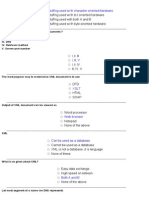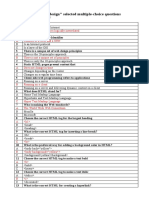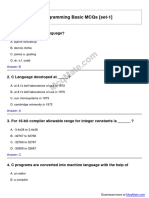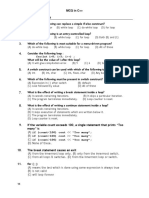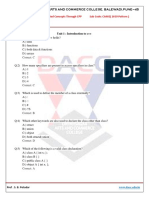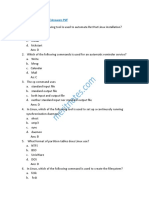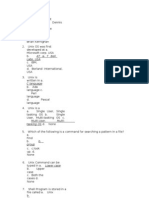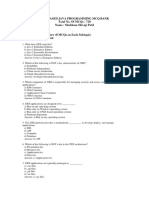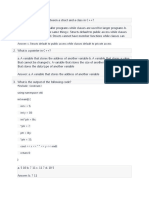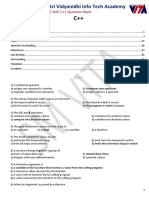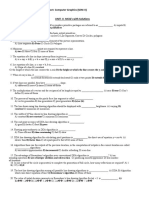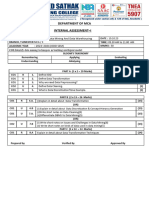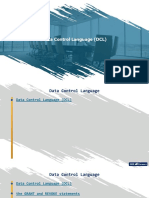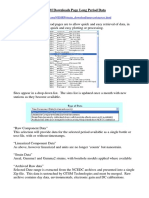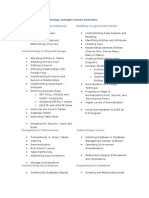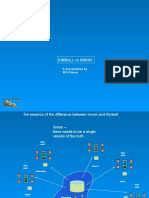0% found this document useful (0 votes)
1K views9 pagesMCQ's On Files and Streams: #Include #Include
The document contains 35 multiple choice questions related to files and streams in C++. It tests knowledge of input/output streams, file opening modes, stream classes like ifstream and ofstream, stream manipulators, and common file handling functions.
Uploaded by
Prasad MahajanCopyright
© © All Rights Reserved
We take content rights seriously. If you suspect this is your content, claim it here.
Available Formats
Download as PDF, TXT or read online on Scribd
0% found this document useful (0 votes)
1K views9 pagesMCQ's On Files and Streams: #Include #Include
The document contains 35 multiple choice questions related to files and streams in C++. It tests knowledge of input/output streams, file opening modes, stream classes like ifstream and ofstream, stream manipulators, and common file handling functions.
Uploaded by
Prasad MahajanCopyright
© © All Rights Reserved
We take content rights seriously. If you suspect this is your content, claim it here.
Available Formats
Download as PDF, TXT or read online on Scribd
/ 9
